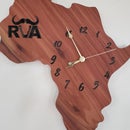Introduction: Face Mask Pleating Machine
The slowest part of making masks during the Covid-19 crisis is making pleats. Jigs abound for folding the pleats on individual face masks. Enter the Pleatenator 9000 which speeds up the pleating process by allowing the person sewing to continue pleating for as long as their material holds out. This machine to pleat material for making face masks is simply a starting place for your creativity to improve on in order to help people make needed face masks quicker. It is made from scraps from around my shop but some parts could be nicely made by 3D printing.
Supplies
drawer slides
heavy guage wire
1 foot of 3/4 inch angle iron (or 3D print)
Rolling pin or pipe to roll the cloth on.
a few pieces of steel or something for weight
one hinge
Various scraps of wood
Step 1: The Pleat Maker
This piece could be 3D printed. I used 3 each 4 inch pieces of 3/4 inch angle iron for making the 3 pleats. Cut down the angle 1 1/2 inches and with a pliers bend the angle down to make a sharper angle toward the end. Use heavy guage wire to draw the cloth into the angle. Place a piece of wood on each side of the angle iron so that the cloth is directed down a 3 1/2" channel. This is all mounted on 1/8" plywood which hangs over the edge of your supporting structure to deliver the pleated material close to the sewing machine needle.
Step 2: Fixtures to Keep Your Cloth Moving Straight
One of the complicated parts of the machine is to keep the cloth moving straight so it doesn't give you uneven pleats. Six inches before the cloth reaches the pleating angle irons I hinged a 2x2 and added a piece of steel on top for additional weight which guides the cloth flat and straight into the pleater. I used a printer feeding mechanism to help guide the cloth as it leaves the roll but that doesn't seem necessary. To roll up the cloth I used a rolling pin with forks holding it so it can be slid in after the cloth is rolled up. You could have one person making more rolls with additional rolling pins. The last piece is a small piece of steel that lays across the pleats as they leave the pleater in order to flatten them completely. Probably a roller would work nicely here.
Step 3: The Support to Hold the Pleater
The cloth feeding out of the pleater needs to be 3 1/2 inches above the table. This seems to be the standard measurement for sewing machines. Use drawer slides so that the pleater can travel as you sew across the pleats. The support pictured is a bulky 2' square only because I had long drawer slides available. A six inch drawer slide would be sufficient. If you use drawer slides remember that your drawer is open to start with and closes as you sew across the pleats.
Step 4: Sewing Your Pleats
The key to the pleater is to pull the cloth through to your preferred length of mask. Make a seam. Move over 1/4" and make another seam. Continue doing this for the length of the cloth. Cut apart the masks between the seams and add your straps or elastic.
Step 5: Add Your Ideas for Simplifying and Improving the Machine in the Comments.
Here is a rendition of the Pleatenator with better documentation:




